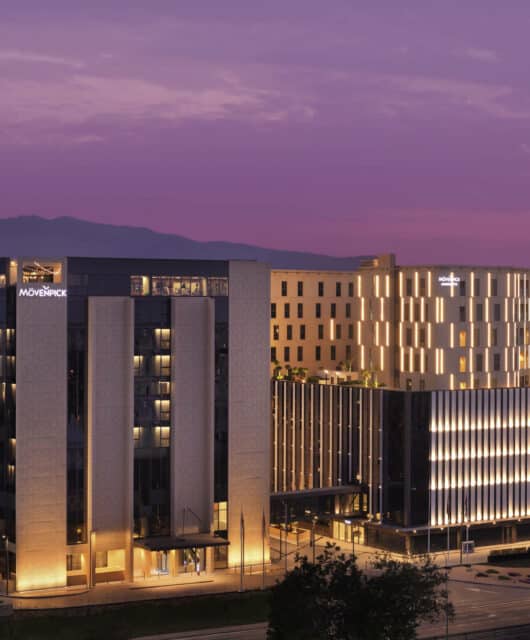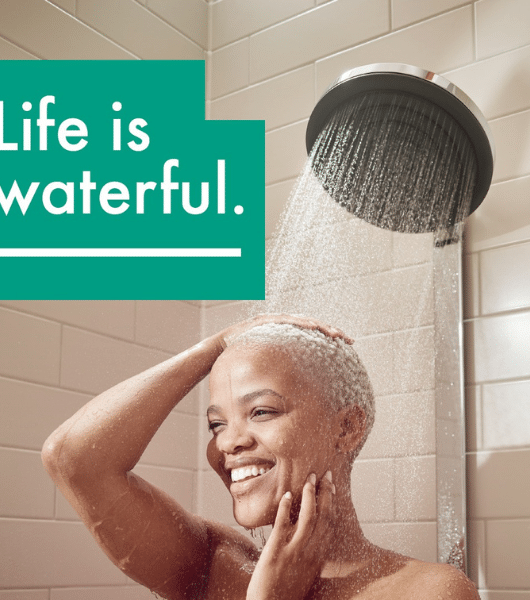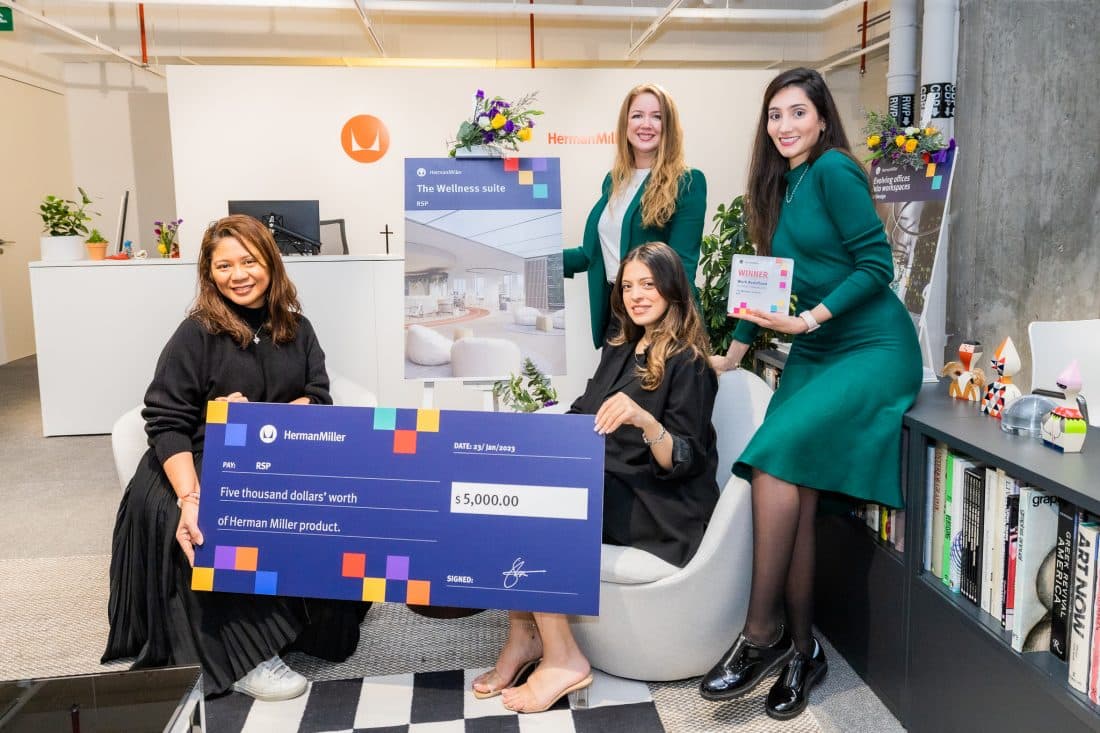 Herman Miller announced the winner of the Work Redefined, The Design Challenge, and Design Middle East was invited to a candid conversation with the winning team and judge.
Herman Miller announced the winner of the Work Redefined, The Design Challenge, and Design Middle East was invited to a candid conversation with the winning team and judge.
After receiving numerous impressive and curated entries, Herman Miller, a member of MillerKnoll’s collective of brands, has announced the winners of this year’s Work Redefined – Design Challenge.
The winner of the 2023 challenge was The Wellness Suite, designed by RSP. They envisioned a space that’s highly flexible and collaborative; one where wellness and connection are right at the heart of the office. “We approached the challenge by putting ourselves in this office. How would we want the office of the future to look in our eyes, and in our experience as well?” said the team at RSP.
This year’s Work Redefined – Design Challenge was hosted in Africa and the Middle East, welcoming in a new group of leading design firms to create their vision for the workplace of the future. Participating studios and workgroups were tasked with designing a 500- to 750sqm workspace for 50 to 100 people, incorporating pieces from MillerKnoll’s collective of brands, including the wide suite of offerings from Herman Miller. The results were unique, inspiring and forward-thinking.
On the shortlist were I R Design, Design Smith, Bluehaus Group, Eight Inc. and Swish Design Studio.
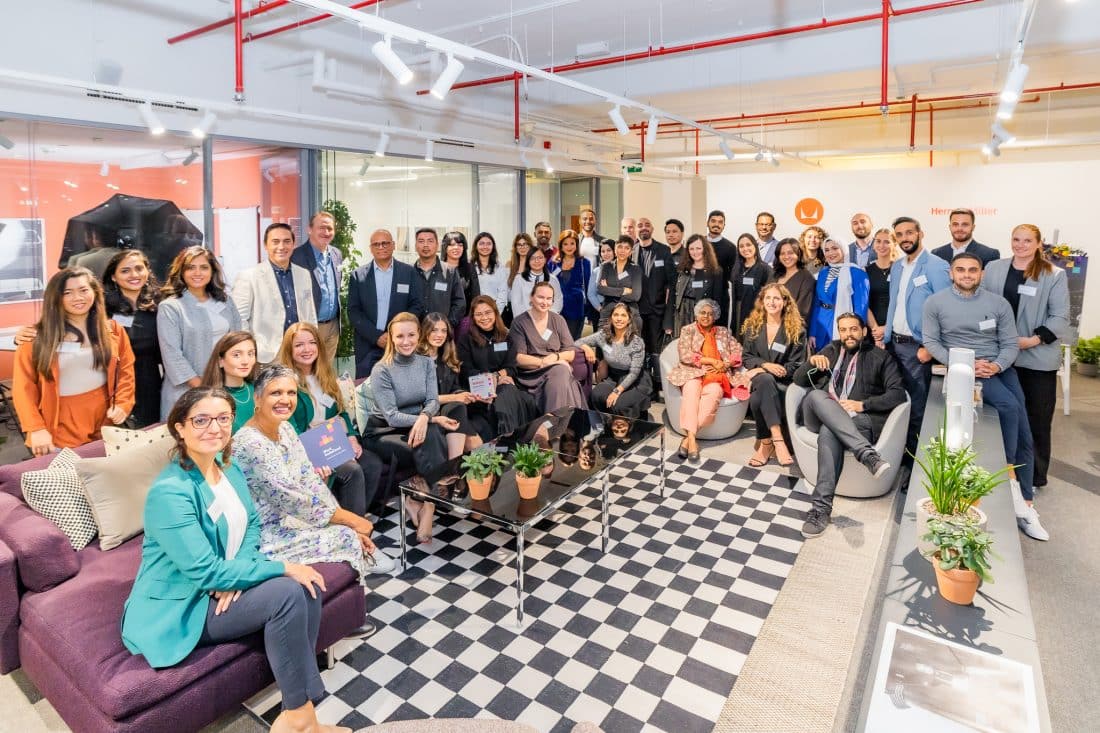 An interview with the RSP team that won the design competition.
An interview with the RSP team that won the design competition.
How would you describe this competition and your strategy for victory?|
The competition was eye opening and inspiring for us. Our overall research and ideas have revolved around our own experiences and human interactions in the workplace. Our research was based on experimenting and brainstorming out of the box ideas that can be implemented within the workplace, and this is how we came up with the wellness worksuite concept. We believe the concept of merging hospitality with wellness, and creating a human centric balanced workplace is the future of workplace.
How do you see Herman Miller as a workspace innovation leader?
As one of the world’s leading furniture brands, whose core values place great importance on the environment, community and health and wellbeing of its end users. MillerKnoll’s extensive and dynamic range of furniture pieces is what makes the brand innovative in the field. Their extensive research, which has really helped us through the design process for the competition, encompasses all aspects of the human experience to ensure they cover human’s needs on a wholistic level.
Explain your winning design?
The Wellness Work Suite, where wellness becomes the foundation and core value of the workplace. Our design is a place which caters for all working styles, encourages a sense of community, places the employee’s wellbeing at the forefront and is a place where technology is seamless. We strongly believe that those components lay the foundations to optimize an employees’ wellbeing which in turn encourages maximum productivity and work out put, supporting the company’s ultimate vision.
When we first started the design process, we thought about how we can further enhance the idea of working from home? this gave us a clue that the workspace required something more to entice users to come back to the office, and the next level of relaxation from home is none other than wellness & hospitality which gave birth to the wellness worksuite concept.
What does this win mean to you?
This win is exciting for us and it’s a living proof that many companies are thinking forward and working to finding solutions to create the ultimate working experiences and the idea of putting the employee’s wellbeing at the forefront. As designers we always want to see our designs impact the world in a positive way, especially after the pandemic where there has been a great shift in the working model. Re-imagining workspace through the lens of hospitality with a core focus on service, comfort and convenience, companies can create vibrant destinations that engage and inspire their employees.
What are your plans now?
RSP is looking forward to taking on the experiences and findings to our own offices as well as our current and future design projects to enhance the overall work scene. This is the start of re-looking at our current approaches in the workplace, as the world is evolving our work habits and scenes should always be adapting to those evolvements.
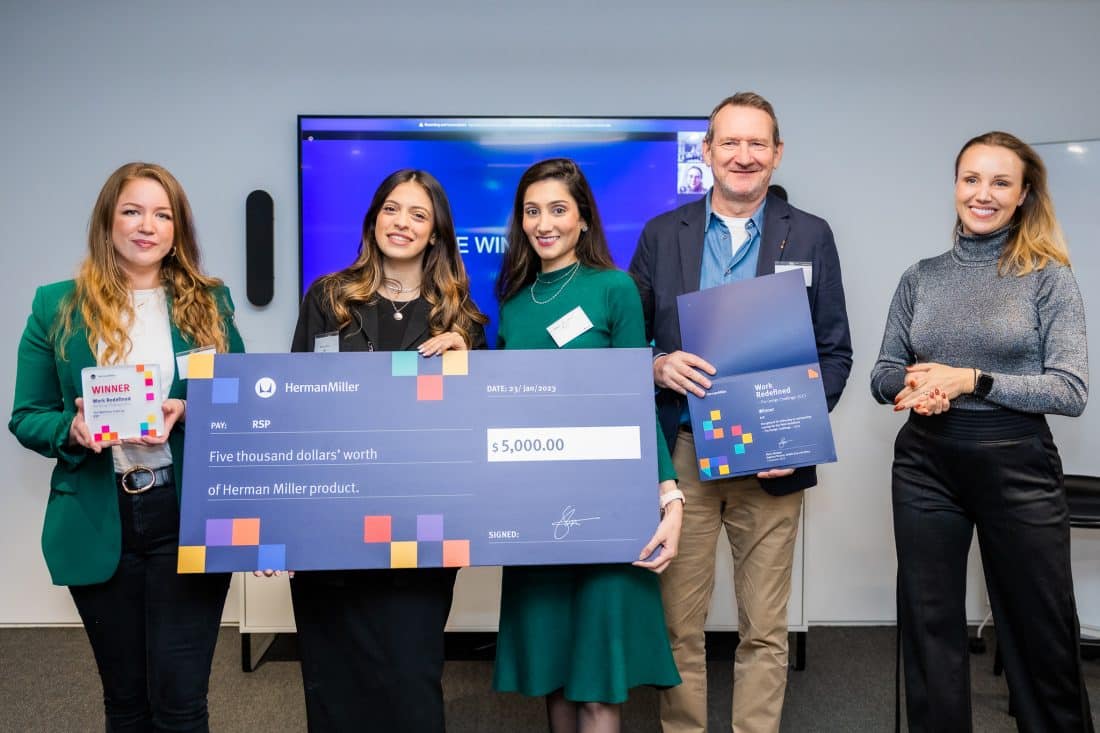 In conversations with Esra Lemmens, Design Strategist at the Esra Lemmens Agency and one of the competition’s judges
In conversations with Esra Lemmens, Design Strategist at the Esra Lemmens Agency and one of the competition’s judges
How would you describe your approach to this design competition?
As a judge in this year’s competition, it is, of course, our task to verify that all the boxes are ticked; to make a fair comparison. Second, I’ve witnessed a shift in how people and the organisations they work for have developed better boundaries between work and life in order to encourage deeper, more meaningful engagement with both, which is a very interesting juxtaposition to the past and a characteristic of the future of work, I believe. We often focus on productivity when talking about the work environment, and we have created “Human doings” who believe that they must “do” things to be valued in our society and to value themselves. The future of the workplace will evolve around “Human beings” who believe that their self-worth is defined by their values, attitudes, and beliefs. They will seek a workspace that embodies that. In this competition, I’ve focused on this phenomenon in particular, especially since it’s called Work Re-Defined. Participants had the unique opportunity to re-think existing systems, relationships and connections to space, time and each other.
How is Herman Miller paving the way for innovation and attracting talent in the workspace industry?
I’ve been drawn to Herman Miller’s impressive research since my first introduction to the brand during my early design studies. It is no secret that there is a strong positive relationship between collaboration and innovation, and Herman Miller is well aware of this. Without application, knowledge is just knowledge. Sharing and applying that knowledge is wisdom. . This is precisely why talent in the workspace industry is drawn to the brand.
What qualities are you most looking forward to in the winner?
From a winner, I expect to see work that sparks dialogue and ideas on how we can set the scene for people to work at their best. I would love to see a complete re-invention of the workspace tying in with what they identify as values of the future.
Are you happy with the response and entries you received or this competition?
Absolutely! It is great to see a significant number of motivated designers step out of their comfort zones, stretching their imaginations and expanding the realm from what they usually do.
How would this competition benefit the winner in terms of knowledge, career growth, and international positioning?
Firstly, access to knowledge and the Herman Miller research is an excellent advantage to any professional in the field. If you know better, you do better! Loosely taken from Maya Angelou.
For any designer, budding or established, it is great to leverage a brand like Herman Miller and to be recognised by them. I believe it is often underestimated how opportunities like Work Re-Defined can significantly fast-track one’s career. Showcasing the courage to take on challenges as these are not only a great learning experience but it can also give you the upper hand over peers with a similar degree or work experience, especially in a highly competitive environment like the Middle East. Not to mention that it shows great ambition, perseverance and bravery on your CV, and these are the much sought-after so-called soft skills.
How would this competition further strengthen Herman Miller’s position in the design industry and the community?
Design is really an act of communication, which means having a deep understanding of the people with whom designers and brands are communicating. Everything around us has been designed in some way, and all design ultimately produces an emotion. We experience an emotional reaction to our environment moment-by-moment: a like or a dislike, elation, joy, frustration. We ‘feel’ it. It’s personal. On a community level: by establishing this emotional connection through the brand, Herman Miller fosters loyalty and creates long-lasting relationships. Recognising the local talent pool is paramount in this. From a numbers perspective, emotions are the driving force behind most buying decisions. Brands that understand this well will thrive.


